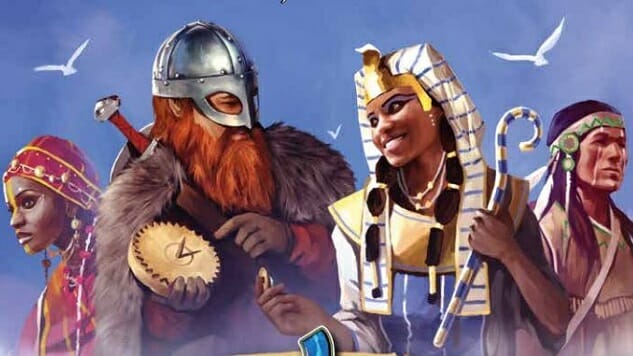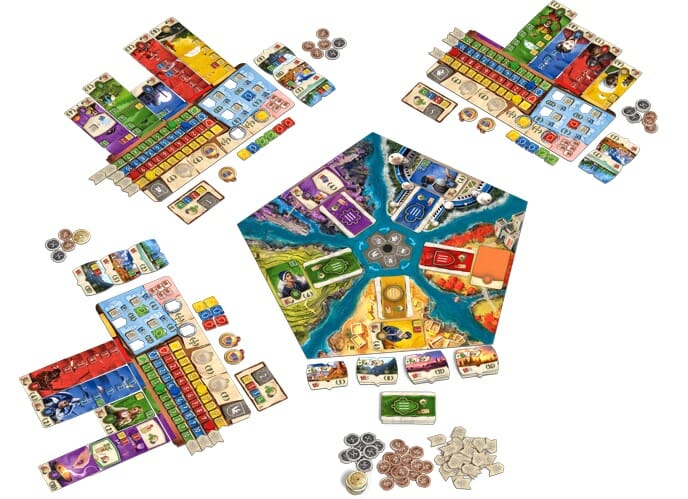Civilization Is Yours for the Building in the Almost Too Clever Board Game Hadara
Art courtesy of Z-Man Games
Hadara made my top ten list for 2019 and is already the game I recommend to people who like 7 Wonders but want something different or something that isn’t over quite as quickly. While 7 Wonders is still my favorite game, Hadara manages to capture a lot of what’s good about it, with a few new quirks of its own, suffering just a little from one or two twists too many.
Hadara is a card-drafting and civilization-building game where you’ll buy and sell cards over the course of three “epochs,” building a tableau for points and to move your four civilization tracks. As in 7 Wonders, you don’t collect actual resources other than money; in Hadara, you can only buy cards with coins, as there are no resources at all and there’s no tech tree to get you cards in later epochs for free. Instead, you’ll use the tracks to gain other benefits outside of the card-drafting phases.
Each epoch has two separate phases where you’ll gather cards. The board has five stacks of cards, in the four track colors as well as purple cards, face-down around a central wheel. On a turn in phase A, each player simultaneously takes the top two cards from the stack adjacent to their player symbol. They must choose one card to discard to the board, making it available in the second phase. The remaining card can be bought for its price, shown on the front of the card, or sold—and removed from the game completely—for the price shown on the back, which is two, three or four coins depending on the epoch. The wheel makes a full rotation on the board in Phase A of each epoch, so each player will get to make the buy/sell decision five times, once per card stack (and color).
At the end of Phase A, each player then gets coins equal to the number shown on their yellow (income) track, and then has two optional decisions. If the player’s red (military) track meets any of the five thresholds for acquiring a colony token, the player may do so, and then pay one, two or four coins to flip it to reveal its benefits, which will let the player move up on one or more of their tracks and give the player victory points at game-end. (The player can choose not to flip the colony and take an immediate payout in coins, but I still can’t see when this would be the optimal choice.) Then, if the player’s blue (culture) track meets any of the four thresholds for building a statue, the player may do so, gaining victory points and moving up one track of the player’s choice by two or more spots.
In Phase B, players go around the table and choose one card from the top of the discard piles—you can’t root through any of the piles—and may buy or sell it as in Phase A. This continues until all piles are exhausted, after which players collect income again and may choose to acquire a colony or build a statue. Phase B has two more steps: Each player must check to ensure their green tracker (food/agriculture) is at least as high as the number of cards in their tableau; if not, they can’t feed their people and must return cards until the two numbers match.
-

-

-

-

-

-

-

-

-

-

-

-

-

-

-

-

-

-

-

-

-

-

-

-

-

-

-

-

-

-

-

-

-

-

-

-

-

-

-

-









































